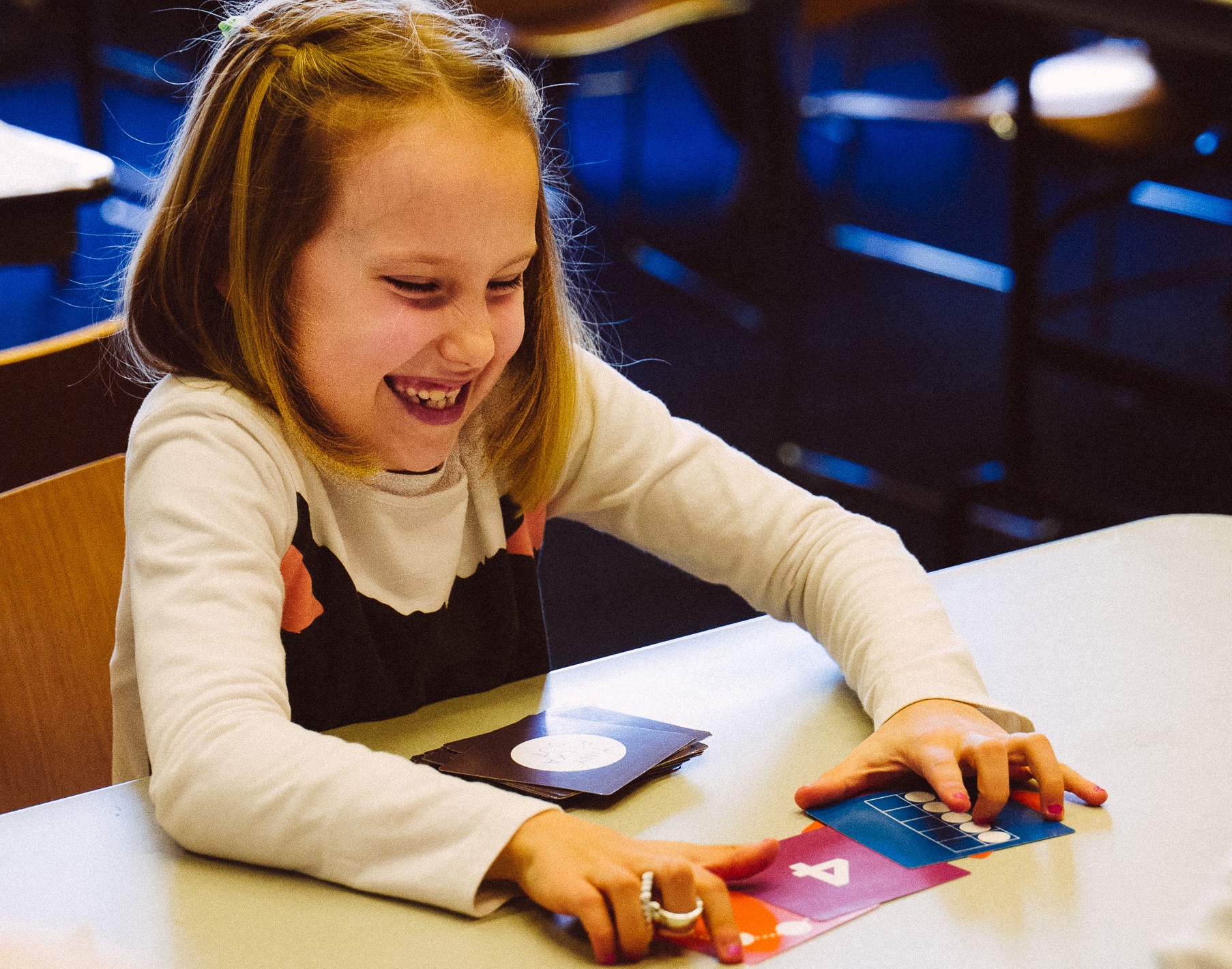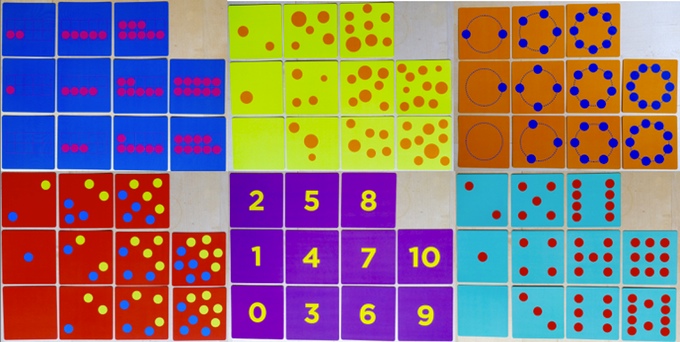
When Denise Gaskins’ kids were growing up, reading meant family time, history meant acting and science meant hands-on exploration. But math? Math was something parents dreaded, a fear so palpable she often saw adults handing their own anxiety over to their kids.
“Seeing this attitude made me want to cry. It doesn’t have to be like that,” says Gaskins, founder of the popular Let’s Play Math blog and author of Let’s Play Math: How Families Can Learn Math Together — and Enjoy It.
The cure for math dread? Math play. The antidote for “not getting math”? More math play. Gaskins is one of a growing group of advocates revolutionizing the way parents support math concepts at home. Goodbye worksheets and drills, flashcards and times tables. Hello practical problem-solving, hands-on activities and art projects. The common denominator for all of them: harnessing children’s innate curiosity and love of fun to highlight the natural connection between play and mathematics.
Math play happens any time you combine a math concept with play. It can be as simple as guessing how many steps it takes to get to a tree and then counting them out, reading a math story book, playing a game of Connect Four or availing yourself of a growing number of math board games. The learning happens within a fun or practical context.
“Play involves choice, doing something because it brings you joy, not to fulfill an obligation,” says Gaskins. “In math play, we entice rather than demand.”
It's Just a Game
The timing could not be more critical for the next generation of learners. A recent study published in The Journal of Psychological Science found that children with math-anxious parents who helped them with their math homework learned less math during the school year and were more likely to be anxious about the subject. In other words, if you show your kids you’re scared of math, they’ll be scared, too.
Exacerbating the problem of math anxiety is the national introduction of new Common Core standards for how math is presented in schools and teachers’ own math anxiety. Add to that the friction created between parents eager to help their children and children being taught different methods than their parents’ generation and you have a recipe for major a math disaster.
Math play, Gaskin says, takes the fear factor out of mathematics by making it a low-stakes game (often literally). Infusing math with fun makes the learning stick and reduces stress for all parties, she says.
Pledge to banish the phrase 'I am bad at math.' Displaying your own curiosity toward math is better than offering blanket statements.
While studying math at Swarthmore College, mathematician Dan Finkel became consumed with the question of why some people leave school loving math and others don't. The answer, he found, was connecting math to gaming. To inspire kids of all ages to learn, Finkel created the award-winning Prime Climb board game, the website Math for Love and, most recently, the Kickstarter project Tiny Polka Dot game.
“Kids who play are more likely to persevere, to take ownership of what they’re doing, to change the rules to meet their own needs and interest, ask questions, make connections and have fun,” says Finkel. “Math, when approached playfully, is incredibly fun and compelling.” Math without play, however, can feel unmotivated, boring and confusing, he says.
Having a good time while learning doesn’t have to be complicated, adds Lucy Ravitch, author of the math picture book The Pancake Menu and Kids Math Teacher blogger.
Math activities can be as simple as taking a ruler and measuring how big a room is or the difference between a child’s shoe and an adult’s shoe. Or kids can time how long it takes to do certain activities or figure out how many gallons of water the family uses each day.
“Learning should be enjoyable so always try to have fun and be patient,” Ravitch says. “Being positive and understanding that there are different ways to solve the same problem is an important lesson to learn.”

Here are some great ways to do math play at home with children this summer:
Preschool
- Introduce lots of blocks of different sizes and shapes and give kids time to play. Use names for shapes, numbers and relationships, but don’t drill or belabor vocabulary. “Lessons taught too early can backfire in a big way,” Finkel says.
- Finger painting, pretend grocery shopping, organizing, tactile/sensory counting and modeling and playing with toys are all great activities, adds Ravitch.
Kindergarten
- Board games like Memory, Connect 4, Sorry and Checkers are great for this age, by which most children know their numbers and are interested in games.
- Create a math story, Gaskins says: “Panther the barn cat went hunting in the field and caught two mice every day. How many mice did he catch in four days?” Solve it together and then — very important — invite your child to tell you a math story.
- Use shaped blocks puzzles like Tangrams or Tiling Turtles to build spatial awareness.
Grades 1-5
- Finkel suggest doubling down on math games in the house. Try abstract logic games like Blokus, Quoridor and Santorini; dice game like Yahtzee, Pig and Farkle; card games like Cribbage, Casino and Poker; and puzzle games like Rush Hour, SET and Chocolate Fix.
- Ravitch suggests “playing restaurant” to touch upon a lot of great math concepts — from learning fractions to prep the meal to tallying up the final bill.
- Encourage your children to notice the math all around them, Gaskins says. Investigate, experiment, estimate, explore, measure — and talk about it all. Curl up together on the couch to read a math book, or tell math stories at bedtime. Search out opportunities to discuss numbers, shapes, symmetry and patterns with your kids.
Whatever you do, pledge to banish the phrase “I am bad at math.” Above all, displaying your own curiosity and sometimes even your own vulnerability toward math is better than offering blanket statements that may not reflect the whole truth.
“Don’t stress about the answers,” Finkel says. “If kids have the wrong answer, it is way more interesting and valuable to try to understand how they think.”











